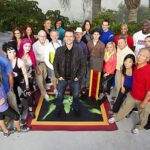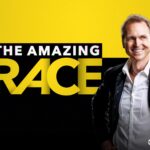Setting foot on Mars by the 2030s is human destiny and a US priority, and every dollar available must be spent on bridging gaps in knowledge on how to get there, NASA’s chief said Monday.
Addressing a conference of space experts at George Washington University, NASA administrator Charles Bolden said that despite hard economic times the United States is committed to breaking new boundaries in space exploration.
“A human mission to Mars is today the ultimate destination in our solar system for humanity, and it is a priority for NASA. Our entire exploration program is aligned to support this goal,” Bolden said.
President Barack Obama has proposed a $17.7 billion dollar budget for NASA in 2014, and he supports a “vibrant and coordinated strategy for Mars exploration,” Bolden said.
Among the first steps to sending astronauts to Mars are NASA’s plans to capture and relocate an asteroid by 2025, a process that should inform future efforts to send humans into deep space, the former astronaut said.
“The US has demonstrated that we know how to get to the Moon,” Bolden said.
“What we have not demonstrated and what I think everyone in this room — well most people in this room will concede, is that there are technological gaps to sending humans to an asteroid and to Mars,” he added.
“And so every single moment of our time and every single dollar of our assets must be dedicated to developing those technologies that allow us to go beyond low Earth orbit, beyond the Moon.”
The first-of-its-kind landing demonstrated that humans have figured out how to send a one-tonne package of machinery to Mars.
But many experts believe that the size of the package needed to maintain a human habitat on Mars would weigh more like 40 tonnes. There also needs to be a suitable flight vehicle, and a type of fuel potent enough to get it there quickly.
Perhaps a precursor to a human landing on Mars would be another rover that would land at an established site, drill down and hopefully find fresh water, said John Grunsfeld, NASA associate administrator for the science mission directorate.
“That would also be the beacon that allows subsequent missions to navigate to a very precise landing,” said Grunsfeld.
The three-day conference aims to offer a forum for experts to discuss the latest technologies. It will feature discussions on astronaut health concerns Tuesday and an address by retired celebrity astronaut Buzz Aldrin on Wednesday.





